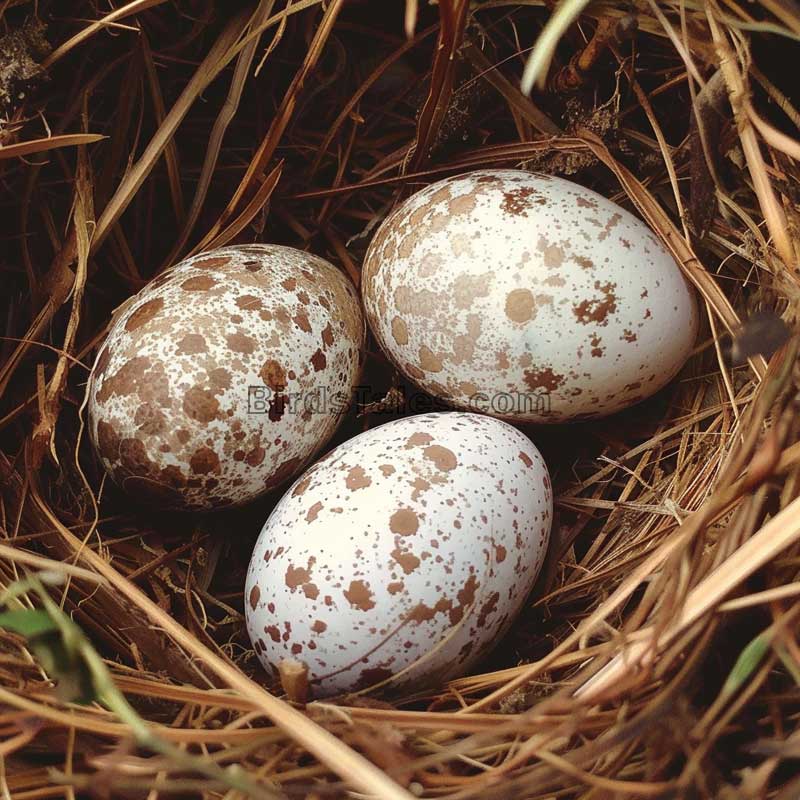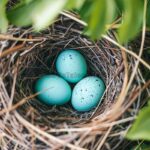Birds Known for Laying Speckled Eggs
Various bird species lay speckled eggs.
Each species has its own distinct pattern and color.
These differences help us identify the birds.
Let’s look at some birds known for their speckled eggs.
| Bird | Egg Description | Incubation Period |
|---|---|---|
| House Sparrow | White/gray with brown or blue speckles | 10 – 14 days |
| Song Thrush | Pale blue with dark speckles | 12 – 13 days |
| Blackbird | Blue-green with light brown speckles | 12 – 14 days |
| Goldfinch | Whitish with reddish-brown speckles | 12 – 14 days |
| Sandhill Crane | Brownish-yellow with brown/gray speckles | 29 – 32 days |
| Vermilion Flycatcher | White with dark brown speckles | 13 – 15 days |
| Northern Cardinal | Red speckled | 11 – 13 days |
Observe and note these patterns to enhance your bird-watching experience.
House Sparrow
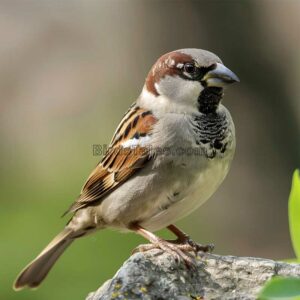
House Sparrows are common in urban areas.
They build nests in eaves, holes, and other man-made structures.
Their eggs are white or gray with brown or blue-gray speckles.
These small birds often lay multiple eggs at a time.
The speckled pattern provides some camouflage.
The eggs blend into the nest materials, helping to protect them from predators.
House Sparrows are hardy birds, often thriving in cities.
Have you ever wondered why some birds lay blue eggs? The unusual blue color intrigues many bird lovers and scientists…
Song Thrush

The Song Thrush is known for its beautiful song.
These birds lay pale blue eggs with dark speckles.
The speckles are often more concentrated at the wider end.
Song Thrushes build their nests in trees and shrubs.
Their eggs are easy to spot due to their distinctive color and pattern.
The speckles can help camouflage the eggs among leaves and twigs.
Bird watchers often listen for the Song Thrush’s song to locate their nests.
Blackbird

Blackbirds are familiar sights in gardens and parks.
They lay blue-green eggs with light brown speckles.
These eggs are usually laid in open nests.
The speckled pattern helps protect the eggs from predators.
Blackbirds are very attentive parents, often seen foraging for food.
Their nests are typically well-hidden, but the speckled eggs add an extra layer of security.
Have you ever wondered why some birds lay blue eggs? The unusual blue color intrigues many bird lovers and scientists…
Goldfinch
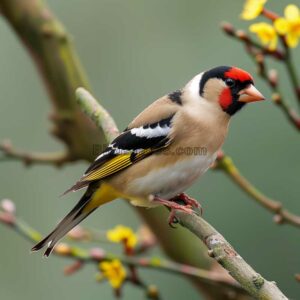
Goldfinches are bright yellow birds with a cheerful song.
They lay whitish eggs with reddish-brown speckles.
Goldfinch nests are often found in trees and bushes.
The speckled eggs blend well with the nest environment.
This provides some level of protection.
Goldfinches are social birds, often seen in flocks.
Their nests are small and neat, much like the birds themselves.
Sandhill Crane
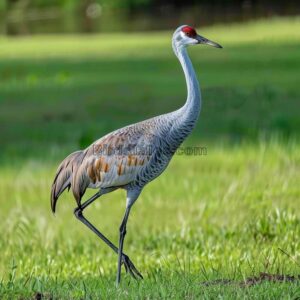
Sandhill Cranes lay large eggs that are light brownish-yellow with brown or gray speckles.
These birds lay about 1-3 eggs at a time.
The eggs incubate for 29-32 days.
Sandhill Cranes build their nests in wetlands, often in tall grasses.
The speckled eggs blend well with the surrounding environment.
This camouflage helps protect them from predators.
Sandhill Cranes are known for their graceful movements and loud calls.
Have you ever wondered why some birds lay blue eggs? The unusual blue color intrigues many bird lovers and scientists…
Vermilion Flycatcher
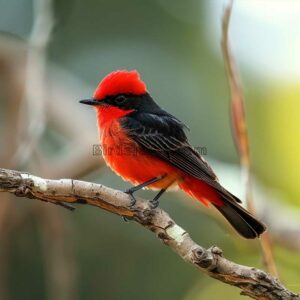
Vermilion Flycatchers lay white eggs with dark brown speckles.
They usually lay 2-4 eggs at a time.
The eggs incubate for 13-15 days.
Vermilion Flycatchers build their nests in open areas, often in trees or shrubs.
The speckled eggs provide some camouflage among the leaves.
These birds are known for their bright red plumage and energetic behavior.
Northern Cardinal
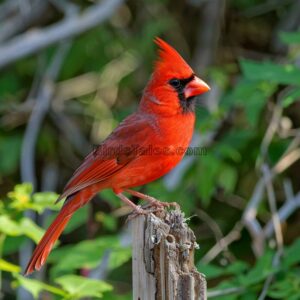
Northern Cardinals are bright red birds with a distinctive crest.
They lay red-speckled eggs, often in well-hidden nests.
These birds are common in gardens and wooded areas.
Their eggs are usually laid in nests built low in shrubs or trees.
The speckles help blend the eggs with the nest surroundings.
Northern Cardinals are known for their beautiful song and striking appearance.
Additional Examples
Other birds also lay speckled eggs.
Here are a few:
- Black-capped Chickadee: These birds lay small eggs with fine speckles.
- Tufted Titmouse: Their eggs are white with reddish-brown speckles.
- Northern Mockingbird: These birds lay speckled eggs with a variety of patterns.
- Blue Jay: Blue Jays lay blue eggs with darker speckles.
Each of these birds has its own unique egg pattern.
The Purpose of Speckled Eggs
Speckled eggs serve various purposes.
The patterns can help protect the eggs.
They may also strengthen the eggshell.
Let’s look at some of these purposes in more detail.
Camouflage and Protection
One theory is that speckles help camouflage the eggs.
This makes it harder for predators to spot them.
Birds that nest on the ground often have more speckled eggs.
This helps them blend with the ground and vegetation.
Camouflage is an essential survival tactic for many birds.
Eggshell Strengthening
Another theory is that speckles help strengthen the eggshell.
Protoporphyrin spots are a type of speckle.
These spots can add strength to weaker eggshells.
This is important for birds that might not get enough calcium.
The speckles can help ensure the eggs survive until hatching.
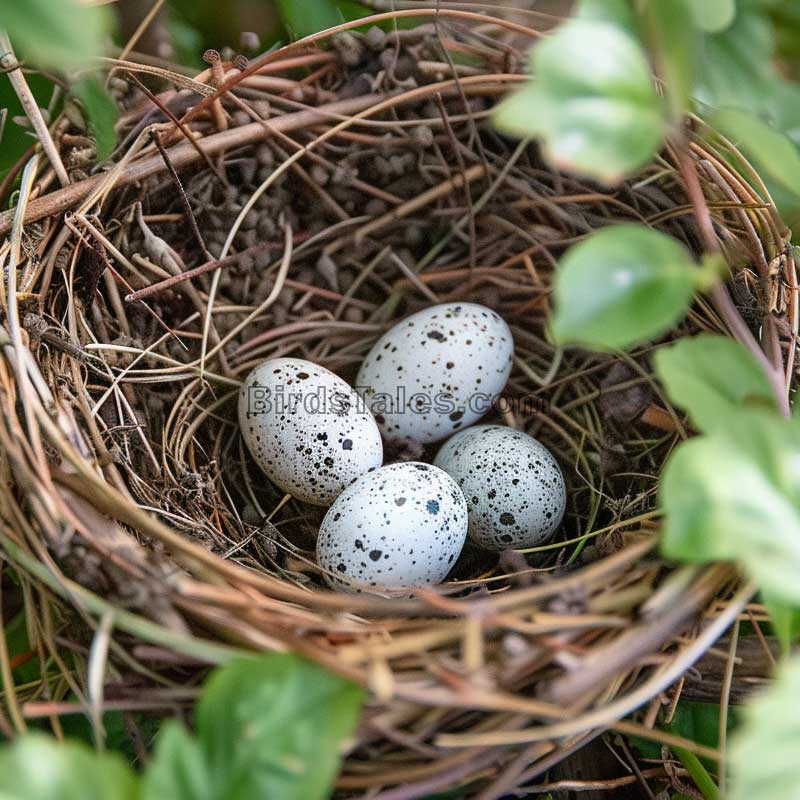
Observing and Identifying Speckled Eggs
Observing and identifying speckled eggs can be a rewarding experience.
Here are some tips:
- Look carefully: Pay attention to the color and pattern of the speckles.
- Take notes: Write down what you observe about the eggs and the nest.
- Use guides: Field guides can help you identify the species.
Bird watching can be a fun and educational hobby.
Observing speckled eggs adds an extra layer of interest.
Remember to respect the nests and the birds.
Keep a safe distance to avoid disturbing them.
Conclusion
Speckled eggs are a fascinating aspect of bird life.
By learning about these patterns, we can better identify and appreciate the diversity of bird species.
The next time you are out bird watching, keep an eye out for these unique eggs.
Each speckle tells a story of survival and adaptation.
Enjoy the beauty and mystery of speckled eggs in the wild.
